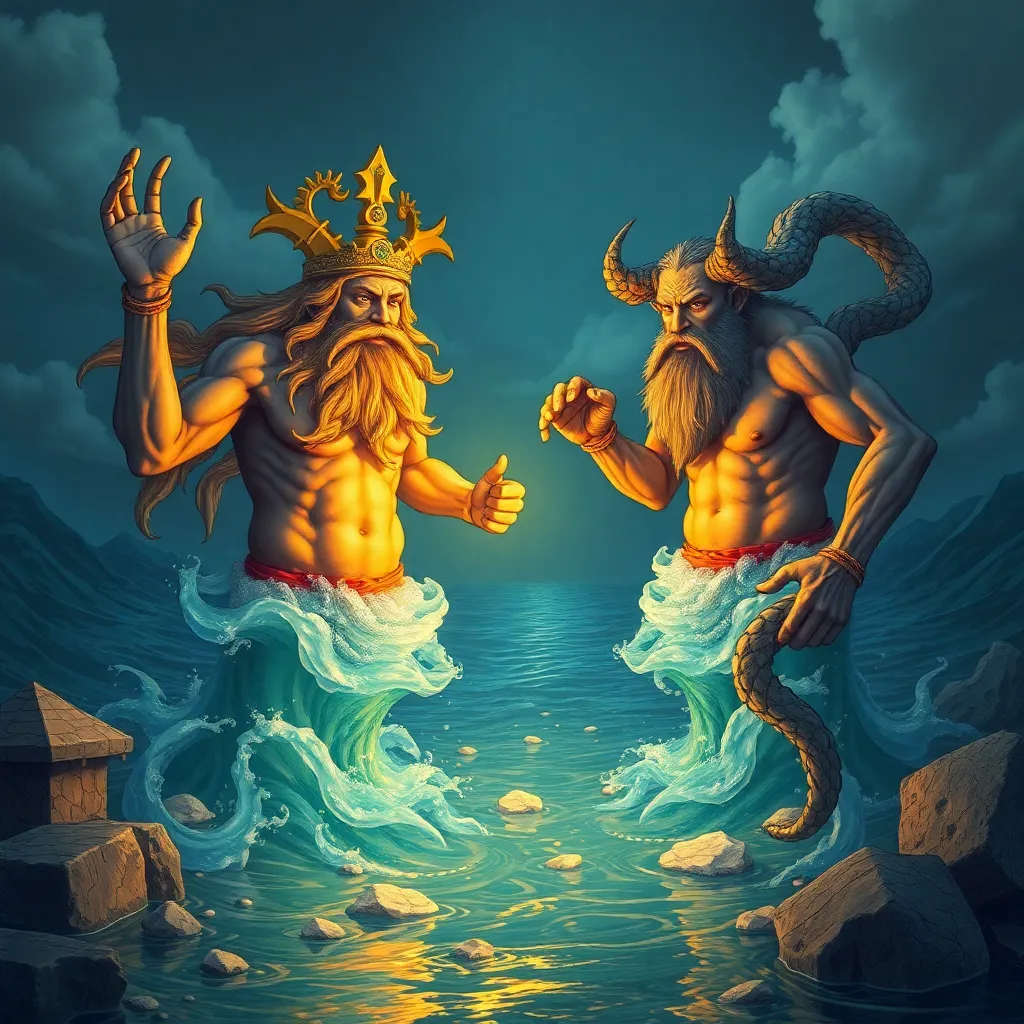Poseidon and the Cyclopes: The Connection Explored
I. Introduction
In Greek mythology, Poseidon stands as one of the most powerful and significant deities, governing the vast and unpredictable sea. He is often depicted as a formidable figure wielding a trident, embodying the might of the oceans. Alongside him in the rich tapestry of myth are the Cyclopes, giant beings known for their immense strength and unique craftsmanship. This article delves into the fascinating connection between Poseidon and the Cyclopes, examining their roles, relationships, and the impact they have had on Greek mythology.
II. Understanding Poseidon: God of the Sea
Poseidon, the son of Cronus and Rhea, is one of the twelve Olympian gods. He is revered as the god of the sea, earthquakes, and horses. His attributes and domains include:
- God of the Sea: Poseidon controls the oceans and is often depicted with a trident.
- Earthshaker: He is associated with earthquakes, reflecting his power over the earth.
- Horses: Poseidon is also recognized as the creator of horses, symbolizing his connection to both land and sea.
Poseidon’s family lineage is notable, as he is one of the three sons of Cronus, along with Zeus and Hades. His relationships with other gods, particularly with Zeus, often involve rivalry and cooperation, reflecting the complexities of divine politics. Symbolically, Poseidon represents the dual nature of the sea—both nurturing and destructive, embodying life and chaos.
III. The Cyclopes: Mythical Beings of Strength
The Cyclopes are mythical giants characterized by their single eye in the center of their foreheads. They are primarily known from two sources in Greek literature: Hesiod and Homer, leading to different interpretations of their nature and roles.
There are two main types of Cyclopes in mythology:
- Hesiodic Cyclopes: These Cyclopes, including Brontes, Steropes, and Arges, are depicted as craftsmen who forge powerful weapons for the gods.
- Homeric Cyclopes: In contrast, Homer describes them as savage, lawless creatures living in isolation, as seen in “The Odyssey” with the character Polyphemus.
The Cyclopes hold significant roles in various myths, often serving as helpers to the gods or as obstacles that heroes must overcome. Their strength and skills in craftsmanship make them pivotal figures in the mythological narrative.
IV. The Mythological Connection: Poseidon and the Cyclopes
The connection between Poseidon and the Cyclopes is evident in several myths and stories, showcasing their interactions and collaborations. Notably:
- Collaboration: Poseidon often collaborates with the Cyclopes, particularly in the creation of mighty artifacts.
- Builders of Poseidon’s Realm: The Cyclopes are credited with constructing Poseidon’s underwater palace, demonstrating their importance in his domain.
One famous myth linking Poseidon to the Cyclopes is the story of the forging of his trident. The Cyclopes, known for their exceptional craftsmanship, created this iconic weapon, further solidifying their relationship with the god of the sea.
V. The Cyclopes as Craftsmen: Gifts to Poseidon
The Cyclopes are not just brutish giants; they are master craftsmen with a reputation for creating powerful and magical items. Among their most notable contributions to Poseidon are:
- Poseidon’s Trident: A symbol of his authority, the trident was forged by the Cyclopes, showcasing their unparalleled skill.
- Other Artifacts: The Cyclopes also crafted various other weapons and tools for the gods, demonstrating their importance in divine mythology.
This craftsmanship represents a vital theme in Greek mythology, where the creation of powerful artifacts often signifies the strength and favor of the gods. The gifts from the Cyclopes highlight the interconnectedness of power and creativity in the mythological landscape.
VI. Cultural Representations of Poseidon and the Cyclopes
Throughout ancient Greek art and literature, Poseidon and the Cyclopes have been depicted in various forms, influencing their representation over time. Some notable cultural representations include:
- Artistic Depictions: Ancient pottery and sculptures often illustrate Poseidon alongside the Cyclopes, emphasizing their relationship.
- Literary References: Works such as “The Iliad” and “The Odyssey” highlight their interactions, shaping perceptions of these figures.
The evolution of their representations can also be seen in later cultures, where adaptations of Greek myths continued to inspire art, literature, and modern interpretations. This influence persists, reflecting the enduring legacy of these mythological characters.
VII. Lessons and Themes from Their Connection
The relationship between Poseidon and the Cyclopes offers several lessons and themes relevant to mythology:
- Power and Creativity: Their connection illustrates the interplay between raw power and the creativity of craftsmanship.
- Cooperation and Conflict: The dynamics of collaboration and rivalry among gods and mythical beings highlight the complexities of divine relationships.
- Moral Lessons: The stories involving Poseidon and the Cyclopes often convey moral lessons, emphasizing values such as respect, cooperation, and the consequences of hubris.
VIII. Conclusion
In exploring the connections between Poseidon and the Cyclopes, we uncover a rich narrative that intertwines power, craftsmanship, and divine relationships. These figures remain pivotal in Greek mythology, embodying themes that resonate through time. Their stories invite further exploration of the intricate tapestry of Greek myth, reflecting the enduring legacy of these legendary characters in art, literature, and culture.




